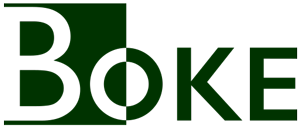 The TOWS Matrix is the essential second step of any well-done SWOT Analysis.
The TOWS Matrix is the essential second step of any well-done SWOT Analysis.
The TOWS Matrix is much less well known than the SWOT Analysis, but it can (and should) be used to turn the lists that emerge from a SWOT Analysis into a useful set of priority actions to help the firm thrive.
Let’s imagine that we’re a small, successful home renovation company in a mid-sized town, with an average of two crews and six employees at any one time. We’ve done a SWOT Analysis and, after good discussion, a reasonable amount of research on how market is likely to evolve, then edited down our lists to a few, manageable key points. We’ve come up with the following lists:
- Strengths
- well-known within our community
- reputation for quality work
- moderately-low staff turnover
- Weaknesses
- our owner is also our main salesperson, staff manager, and site foreman
- we don’t make enough profit to significantly increase our equipment purchases
- we are focused only on the private-owner home-repair market
- Opportunities
- increase in the number of condominiums in our town
- increased interest in environmentally-friendly building materials
- average age of the houses in our community is slowly increasing
- Threats
- significant percentage of our former customers are selling their houses and moving into condominiums
The first step in creating a TOWS Matrix is to put these lists along the edges of a two-by-two matrix:
The next task is to develop plausible actions for each of the four boxes:
SO – Matching strengths to opportunities
WO – Finding ways to offset weaknesses in order to take advantage of opportunities
ST – Using strengths to counter likely threats
WT – Finding ways to offset weaknesses in order to counter threats
Typically, one to two potential actions are developed for each box:
The third step is to take these actions and prioritize them. Our renovation firm might priorize them this way:
Draft Strategic Priorities
- pursue maintenance & upgrade contracts with condominium ownership boards
- create explicit succession plan to be implemented if owner develops health problems
- either make foreman of 2nd crew a part owner of the company, or find another, similar company with a good owner and amalgamate
- distribute flyers to all homes over 50 years old
- build relationships with realtors selling homes we’ve previously renovated to connect with new owners
- offer option of environmentally-friendly building materials
- consider hiring part-time salesperson—perhaps a recently-retired home renovator or customer
This process has the advantage of developing action items that systematically match what is most important in the firm’s environment with what the firm is capable of doing (rather than simply drawing up a list of “to do” items and calling them strategic priorities).
The primary disadvantage is that it may well result in more priorities than a firm can reasonably accomplish. In the case of our imagined renovation company, for instance, we have a list of seven priorities. That’s probably more than we can focus on. There are at least three tips to making this list useful:
- Make sure you one of the top actions matches strengths to opportunities. A company can have many flaws, and encounter many obstacles, but if it is consistently capable of matching strengths to opportunities, it has a good chance of thriving.
- Try to winnow the list down to three (or, at most, four) main priorities. All the rest should be relegated to “good to do if we have time”.
- Review the list semi-annually or annually. If one or more of the top three actions have been accomplished, either elevate one or two of the lower-priority items, or consider doing the TOWS Matrix exercise again.


